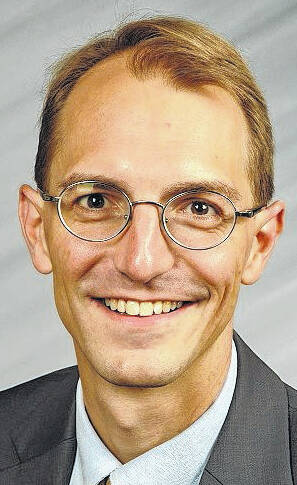
“On my father’s side I am a Northumberland, on my mother’s I am related to kings; but this avails me not. My name shall live in the memory of man when the titles of the Northumberlands and the Percys are extinct and forgotten.”
— Jacques-Louis Macie
“And now my mission is ended and I deliver into your hands … the remains of this great benefactor of the United States.”
— Alexander Graham Bell
James was a riddle, wrapped inside an enigma, inside a mystery. He was a Brit, born in France, who witnessed the French Revolution, was once taken prisoner in Germany, extensively traveled Scotland, died in Sardinia and who, during his 64 years alive on this Earth, never set foot in the New World. And yet, when he passed, he left a bizarre will that eventually led to the greatest repository of knowledge in the Americas. Thursday of this week marked the 177th anniversary of the establishment of the organization that his gift created.
The illegitimate son of Hugh Percy, 1st Duke of Northumberland, and Elizabeth Hungerford Keate Percy, his mother was sent off to Paris so that his birth would not create a scandal. To hide his existence, he was given the French name Jacques-Louis Macie. Educated at Oxford, he gained substantial wealth from his mother’s first husband, who had died before his birth, and the estate of her second husband, his step-father.
Although he studied a bit of everything — venomous snakes, Indian medicine, cave fossils, and even human tears — he is best known for his work in geology and the chemistry of minerals and has a type of zinc carbonate named after him. He wrote a will in 1826 and eventually died in what is now Italy in 1829. Due to his inheritance, he had substantial wealth at the time of his death but left no spouse and no children. Before he died, he also changed his last name to the original last name of his biological father — Smithson.
His will contained several unusual clauses. First, he addressed his former servant, saying, “To John Fitall, in consideration of his attachment & fidelity to me, & the long & great care he has taken of my effects, & my having done but very little for him, I give and bequeath the annual sum of One hundred pounds sterling for his life.” In regards to another former servant, he decreed that any money he lent the man could be kept for five years at 5% interest.
Then, he left the remainder of his fortune to his nephew, with conditions. His will stated, “To Henry James Hungerford, my Nephew, heretofore called Henry James Dickinson, I give and bequeath for his life the whole of the income arising from my property of every nature & kind whatever.” That is to say, he left the interest income from his fortune to his nephew on the condition that his nephew must change his last name.
But if the nephew were to die without issue, then Smithson directed, “In the case of the death of my said Nephew without leaving a child or children, I then bequeath the whole of my property to the United States of America, to found at Washington, under the name of the Smithsonian Institution, an Establishment for the increase & diffusion of knowledge among men.”
His nephew died in 1835, leaving behind no children. In June of that year, a shocked Andrew Jackson learned of the fortune coming to the United States and a Congressional committee was formed to determine what to do with the funds. In 1836, Richard Rush, a former Treasury secretary, was sent to Europe and returned two years later with 11 boxes containing a total of 104,960 gold sovereigns, Smithson’s mineral collection, library, scientific notes, and his personal effects. The coinage turned out to be worth more $500,000 (a vast sum at that time) and in 1846, following construction of the first building, President Polk dedicated the opening of the Smithsonian Institute.
Today, the institute contains several museums and galleries, including the National Museum of African American History and Culture, nine research facilities throughout the United States and the world, the national zoo, the National Museum of Natural History, the National Zoological Park, the National Portrait Gallery, the National Museum of American History, and the Air and Space Museum — the latter being the most visited museum in the world. In 1904, Alexander Graham Bell traveled to Italy and brought Smithson’s remains back to Washington, where they now lie in the institute itself.
It is often rumored that because Smithson was treated poorly by British aristocracy, his gift to the U.S. was an intentional snub to a nation that had lost the Revolutionary War within his lifetime. Regardless of the reason, Smithson clearly intended to engender learning in the United States, but one suspects that even he would be surprised by the extent to which his gift has grown.
David Hejmanowski is judge of the Probate/Juvenile Division of the Delaware County Court of Common Pleas, where he has served as magistrate, court administrator, and now judge, since 2003. He has written a weekly column on law and history for The Gazette, a sister paper of The Sentinel, since 2005.

